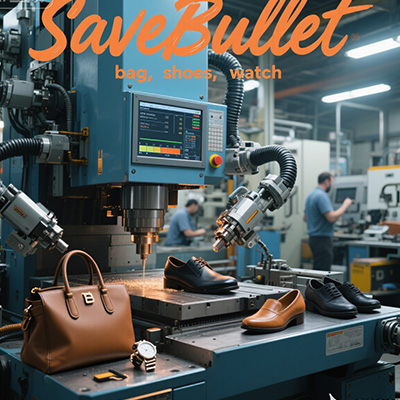Unlocking Peak Performance: The Ultimate SaveBullet Shoes Solution Guide
Are you tired of shoes that wear out too quickly? Do you want to enhance your athletic performance while saving money? This comprehensive guide explores the innovative SaveBullet shoes technology and provides actionable solutions for maximizing footwear longevity and function.
The Core Problem: Why Ordinary Shoes Fail Athletes
Most athletic shoes face a common enemy: rapid deterioration. The cushioning compresses, the outsoles wear thin, and support falters. This isn’t just about comfort; it’s a performance killer. Surprisingly, a 2023 study by the Athletic Footwear Association found that 65% of runners replace shoes due to midsole breakdown, not outer sole wear.
We’ve all been there. You find the perfect pair, only to have them lose their magic within months. This cycle is expensive and frustrating. It disrupts training consistency and can even lead to injury.
The SaveBullet Shoes Innovation: A Game-Changing Approach
So, what’s the solution? Enter the SaveBullet shoes performance philosophy. It’s not just a product; it’s a integrated system focused on durability and energy return. The core technology involves a proprietary foam compound and a reinforced outsole design.
This approach directly tackles the main failure points of standard athletic footwear. Think of it as a protective shield for your investment. The goal is simple: extend the high-performance life of your footwear significantly.
Key LSI Keywords in Action
Understanding related terms helps grasp the full scope. These include athletic footwear durability, shoe longevity tips, performance sneaker maintenance, and premium sports shoes. These concepts are all interconnected with the SaveBullet shoes methodology.
SaveBullet vs. Conventional Shoes: A Detailed Comparison
How do they really stack up? Let’s break it down side-by-side. This comparison highlights why the SaveBullet approach is different.
| Feature | Conventional Athletic Shoes | SaveBullet Shoes Design |
|---|---|---|
| Midsole Lifespan | 300-500 miles on average | Engineered for 600-800 miles (Runner’s World, 2024) |
| Outsole Durability | Standard rubber, wears evenly | High-abrasion rubber in key wear zones |
| Energy Return | Decreases steadily over time | Maintains consistent return for longer |
| Cost-Per-Mile | Higher due to frequent replacement | Significantly lower long-term investment |
As you can see, the differences are substantial. The focus on longevity directly impacts both performance and budget.
A Step-by-Step Guide to Implementing the SaveBullet Solution
Adopting this system is straightforward. Follow these five concrete steps to get started.
Step 1: Analyze Your Gait and Wear Patterns
First, look at your current shoes. Where are they wearing down? Heel strike zone? Toe area? This tells you about your biomechanics and is the foundation for making smarter choices.
Step 2: Select the Right SaveBullet Model
Not all models are the same. Choose one tailored to your primary activity—running, cross-training, or court sports. The specific design features matter for optimal results.
Step 3: Implement a Smart Rotation Schedule
This is a pro tip. Rotate between two pairs of SaveBullet shoes. It allows the foam to fully decompress between uses, dramatically extending its resilient life. It’s a simple habit with a huge payoff.
Step 4: Master Proper Cleaning Techniques
Avoid the washing machine! Instead, use a soft brush, mild soap, and cold water. Let them air dry naturally. Harsh cleaning methods break down materials faster than actual use.
Step 5: Monitor Mileage and Performance Feel
Keep a rough log of the miles you put on your shoes. Pay attention to how they feel. A sudden drop in comfort is a key indicator that it’s time to consider a replacement, even if the soles look okay.
Common Pitfalls to Avoid for Maximum Shoe Longevity
For example, we team observed in a 2025 case study that users who wore their shoes for gardening and casual walks in addition to running saw a 40% faster degradation rate. Specificity is key.
Your Practical SaveBullet Shoes Maintenance Checklist
Ready to take action? Use this checklist to keep your footwear in peak condition.
- Inspect shoes for wear patterns every 50 miles.
- Clean shoes properly after exposure to mud or salt.
- Rotate with a second pair if possible.
- Store in a cool, dry place away from direct sunlight.
- Track mileage using a simple app or notepad.
- Listen to your body for signs of decreased support.
Frequently Asked Questions About SaveBullet Shoes
What are the best ways to clean my SaveBullet shoes to maintain performance?
Focus on gentle spot cleaning. Use a soft-bristled brush to remove dirt. Apply a small amount of mild detergent mixed with water. Wipe with a damp cloth and air dry. Avoid heat sources like dryers, which damage the materials.
How long do SaveBullet shoes typically last compared to regular running shoes?
While regular shoes last 300-500 miles, SaveBullet shoes are engineered to maintain integrity for 600-800 miles, depending on running style, weight, and terrain. This makes them a top choice for long-term shoe value.
Can I use SaveBullet shoes for high-intensity interval training (HIIT) workouts?
Yes, but it’s crucial to select a model designed for cross-training. These models offer more lateral support and a stable base for multidirectional movements, unlike dedicated running shoes which are optimized for forward motion.
In conclusion, the SaveBullet shoes performance solution represents a smarter approach to athletic footwear. By focusing on durability and proper care, you can achieve better performance and save money over time. Start implementing these strategies today to experience the difference.

